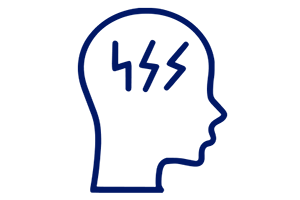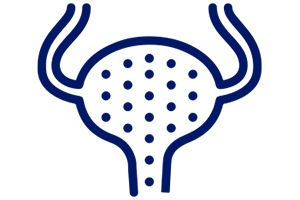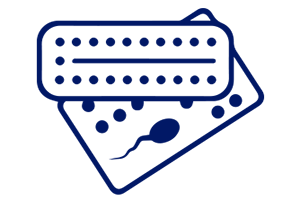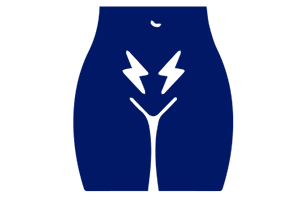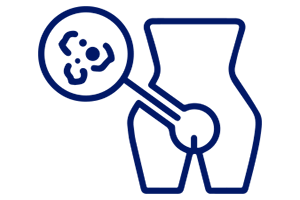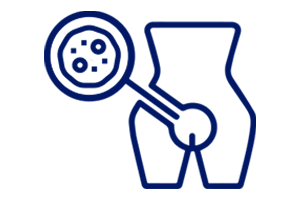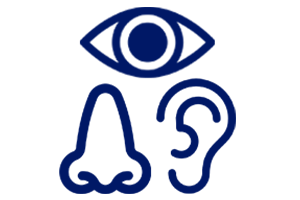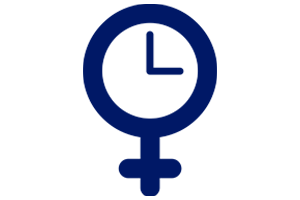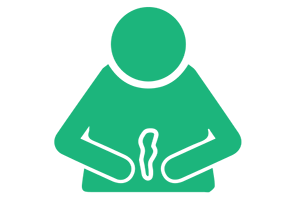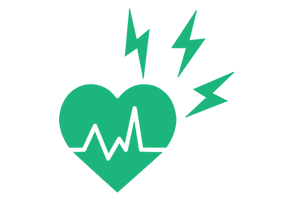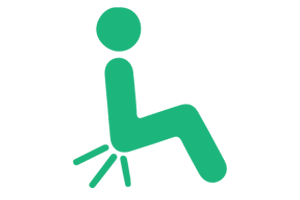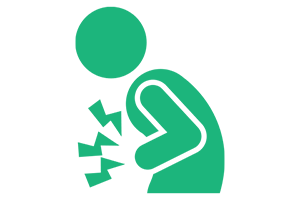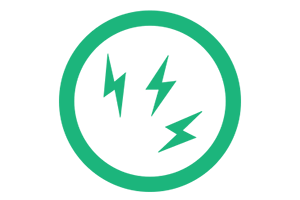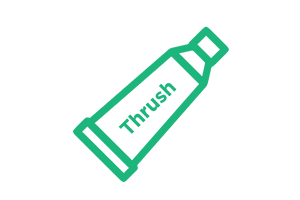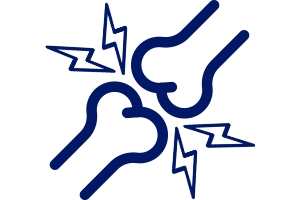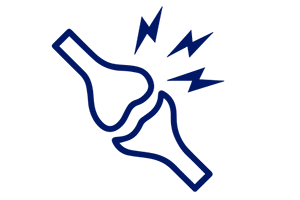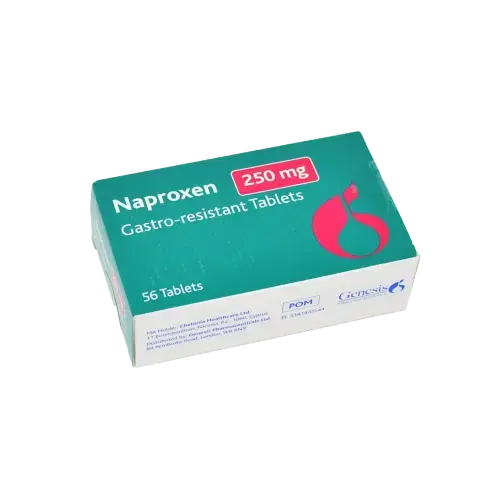Pain is an unpleasant feeling in response to a stimulus. This stimulus could be something that can cause you an injury (e.g. touching fire), an existing injury (e.g. broken arm) or an illness (e.g. sore throat). The severity of pain can vary from slight discomfort to leaving a person in absolute distress. One of the reasons why we feel pain is so that we know when a certain action is harming us. Ultimately it is a nervous response to something our bodies do not like. Pain as a sensation can be felt anywhere on the body. When deciding on how to deal with pain it is important to know the root cause of the pain and understanding what the stimulus is. Treatment for a broken arm would differ to treatment for the flu. Treatment should aim to reduce pain if not completely mitigate it. Types of Pain Pain can be classified as being either chronic or acute. The first would refer to persistent pain that lasts over an extended period of time. Long term conditions such as tendonitis or rheumatoid arthritis. However the cause of pain is not always straight forward, with some causes being unknown. Acute pain is pain that can be treated over a period of time until it is diminished. e.g. the swelling related pain around a broken bone can be treated by resting that limb and taking painkillers during the recovery process to ease the painful symptoms. Beyond acute and chronic, pain can be classified further in to: 1. Nociceptive pain – This is caused by the stimulation of specific pain receptors. Inflammation, vibration, stretching, temperature, and the chemical discharge from damaged cells can stimulate receptors. Somatic pain - sharp and felt at the cause. Can be experienced in the muscles, joints, ligaments, on the skin and in bones. Visceral pain – Refers to back pain. Usually experienced as cramping or a deep ache. Effects are commonly felt in the internal organs and main body cavities. It can be difficult to identify the causative area of visceral pain The main regions in the body affected are the thoracic, abdominal, and pelvic cavities. These can refer to the upper back, mid-back and lower back respectively. 2. Non-nociceptive pain – This occurs in the event of damage to nerves. The result is unusual signals to be sent through the nervous system. These unusual signals are deciphered as pain by the central nervous system. Types of Non-nociceptive pain include: Neuropathic pain – This type of pain centres from within the nervous system itself. It is commonly referred to as trapped nerve. Inflammation, degradation, pressure or infection of the nerves are the root causes of neuropathic pain. Sympathetic pain – Pain experienced in the sympathetic nervous system. This system is responsible for controlling blood flow, perspiration and the speed at which the peripheral nervous system works. These are usually a response to help the body deal with certain conditions such as increased body temperature. Soft tissue being damaged or a bone fracture can cause this pain. Referred pain/Reflective pain is when pain is felt in another part of the body other than the root of an injury. Most Common Examples of Pain Headache – Primary headaches are those caused directly by a stimulus to the head. Migraines, cluster headaches and tension headaches are examples of primary headaches. These come about through over-activity or when there are problems with structures in the head that are pain-sensitive. These can include blood vessels. Secondary headaches are those that occur when another condition stimulates the pain receptors in the head. An example of these can be from dehydration or the flu. Dental pain – A large proportion of dental pain is due to toothache. Most commonly cause by the inflammation of the innermost layer (the pulp) of a tooth. The pulp is made up of nerves which are very sensitive. Reasons why this inflammation occurs can be down to; tooth decay, receding gums, a cracked tooth, loose or broken fillings, and a periapical abscess. Dental pain can also be caused by conditions including; sore and swollen gums, sinusitis, ulcers, periodontal abscess, and injury to the temporomandibular joint, which connects the jaw to the skull. Teething is a common source of dental pain for babies. Back pain - affects a large number of people and could be the result of many different things. Sitting down for long periods in a day, lifting heavy objects, sleeping awkwardly or having bad posture can induce back pain. In many cases rest or life style changes can help to alleviate back pain. However, there are situations where back pain is caused by serious medical conditions. Conditions such as fused vertebrae or a slipped disc can cause people severe pain and these conditions may need better or more specialised treatment. Joint pain – This stems from joint damage. There are a number of conditions that can induce join pain such as gout, tendonitis, arthritis (osteo and rheumatoid) and many more. Alternatively the damage may have been caused from an injury. Muscular pain – Myalgia usually results from stress caused to muscles. This can be from an injury to physical activity such as playing sports. Myalgia can also be stimulated by a medical condition. Viral or bacterial infections, fibromyalgia, thyroid problems, hypokalaemia (low potassium), autoimmune disorders, and certain medicines, such as ACE inhibitors. Period pain – During menstruation muscular contractions in the womb become more intense. The reason for this is to lead the lining of the uterus to shed away as part of the monthly menstruation cycle. At this time blood vessels in the uterus contract, depriving the uterus from blood. This deprivation of oxygenated blood is the stimulus for period pain. Pain experienced in various parts of the body could even be the result of cancer. It is highly recommended that you go to see a medical professional if you have any fears over what may be causing you pain. Treatments There are many different ways in which pain is managed including drug and non-drug intervention, both to good effect. In terms of drug intervention, there are a few different types of painkillers: NSAIDs - These are Non non-steroidal anti Inflammatory Drugs such as Naproxen and Ibuprofen. They work at the point of pain to reduce inflammation and chemicals that cause pain. General Analgesics - Such as Paracetamol work in the central nervous system to reduce the feeling of pain. Opioids - These are compounds that originate from opium and have a similar general structure to each other. Examples of opioids are morphine, codeine, tramadol, oxycodone. These drugs are powerful painkillers that work on pain receptors both at the site of pain and in the central nervous system. They can cause drowsiness, can cause dependency and sometimes nausea and vomiting in patients. Therefore, these drugs are not given unless completely appropriate. There are various other types of drugs that are also used in pain management however the above 3 are the main types used in management. For certain types of joint and muscle pain, topical treatments such as NSAIDs and rubefacient creams are also effective, as well as the use of a TENS (transcutaneous electrical nerve stimulation) machine. For more information about TENS CLICK HERE For help with managing long term pain CLICK HERE for free advice from the NHS. Explore Over the Counter Pain Relief here.
Learn More...
 Account
Account




